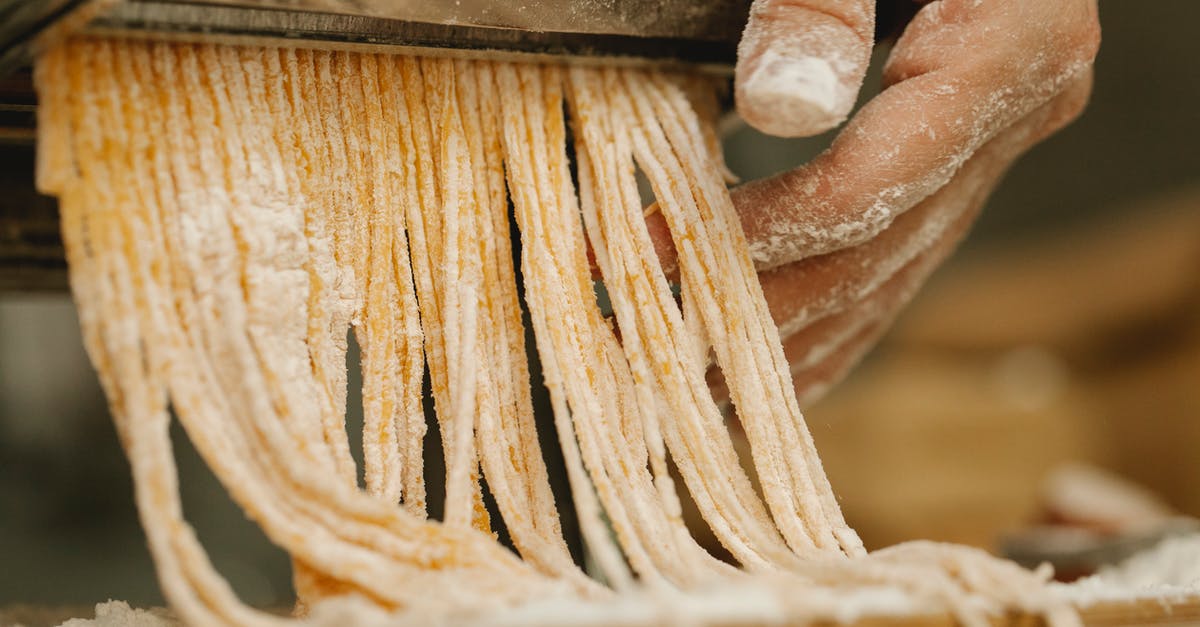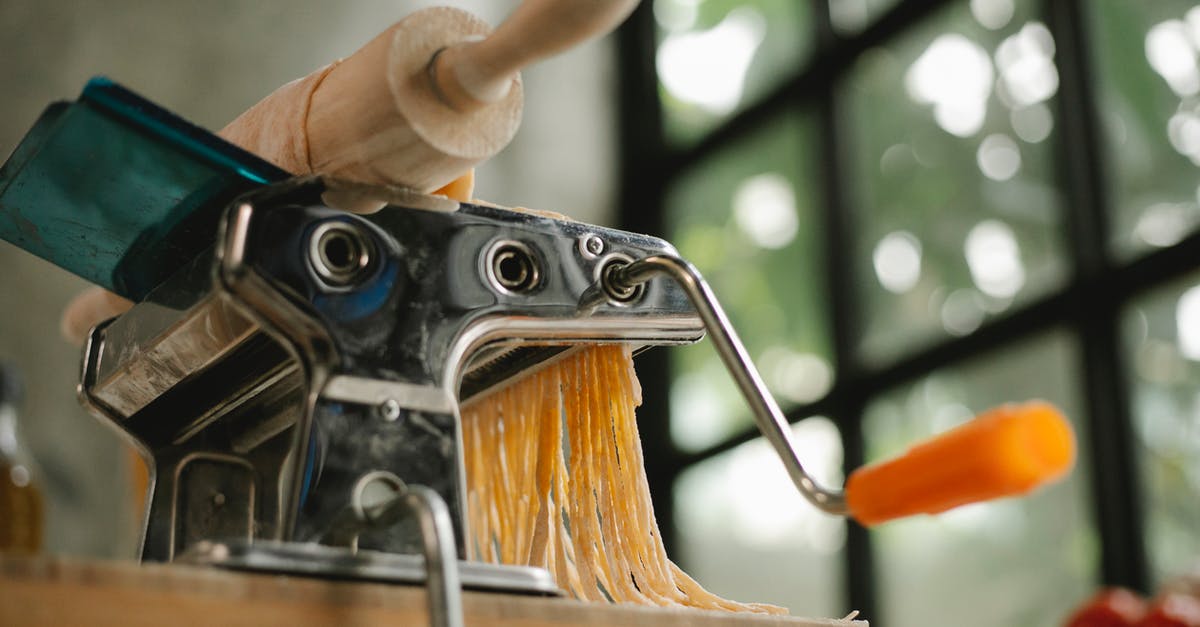Pasta sticks to rolling cutters

Recipe : Three cups AP flour, three or four eggs depending on their size.
This recipe used to work for my little hand crank pasta machine, but lately wont. The pasta that results doesn't stick to itself. The noodles don't fuse and mush together. They stick only to the metal of the cutters themselves, and wont come loose, then double up on themselves. I've tried to separate them from the cutters, but I can only get in a half crank before almost doubling up again. And it doesn't stick to the rollers so long as I keep it dusted.
I hand roll it to lengthen it a bit, then press it flat. After that I run it through the rollers, dusting a bit as I roll it thinner. Then I dust it one last time and run it through the rolling cutters.
Will extra humidity do this? Do pasta machines just get sticky? I've tried flower and oil on the cutters, but neither seems to help. Also I like to make the sheets very thin. Any help would be appreciated.
Best Answer
Any moisture left on the rollers/cutters is an issue in my experience, and if left can result in pitting or corrosion either of which will be difficult to overcome. Qil I would think would not lead to corrosion, but might pit. While present, it will definitely increase the tendency to stick in my experience.
With the rollers, I would dust it heavily including giving it a couple of cranks, then run some fairly dry dough through repeatedly to grab any liquid or oil it can. Make sure to get all areas of the roller edge to edge. I have had luck with this, particularly when my roller was new and for some reason they put some type of dry lubricant on that marked my pasta grey/black if it ran to the edge of the roller. The same can be done if you do things like make flavored pasta or dough and think some residue may be left that will effect future projects for instance I make some cookies with a sour cream dough which are much easier to make with my pasta roller but I want to make sure no dairy is left on the rollers after so this is a cleanup run of some cheap four dough I will then discard.
The same should work with the cutters as long as they have not been pitted or corroded. For them, I would suggest using the same dough, towards the dry and still side, and thick enough to get all areas of the cutter that might be holding residue.
Hopefully you can get it back to good behavior with this type of dough cleaning. It happens to be the cleaning method that came recommended with my roller. When done, dust the maker and put it away that way, yes, looking "dirty" with a dusting of flour to protect it from moisture getting on it and pitting or corroding the working surfaces. Yes, some of that sounds contrary to normal kitchen cleaning practices, but it is what was recommended by my manufacturer and has worked well for me. It is clean, dry flour you are putting on which would not seem like a major safety violation, just a little unsightly.
PS, if you do not want to waste eggs, and I do not blame you, just mix up a dough with a bit of flour and water. I still hate wasting any food, but at least flour is one of the cheapest things we use, and you do not need much. Far less loss than needing to replace the entire pasta maker set.
Pictures about "Pasta sticks to rolling cutters"



Why is my pasta sticking to the roller?
The pasta cannot be too moist or the pasta will stick together as it extrudes from the machine. If it is too moist it should be sprinkled with flour and then sent back through the machine.Why is my pasta machine not cutting?
If wet dough is inserted into the maker, it won't cut very well. When you find yourself with partially cut dough that requires you to manually tear the strips of pasta by hand, then the dough is still a little too wet. If your dough is too wet, give it time to dry, or add more flour.Do you oil pasta machine?
To lubricate the pasta machine, you will need a clean machine and food-grade mineral oil. Step 1: Disassemble all of the parts, and the cutting rollers are the only parts that require lubrication. Step 2: Apply a few drops of food-grade mineral oils to each end of the cutting rollers.Why does fresh pasta stick together?
The reason pasta sticks in the first place is because it's leaching starches into the water as it cooks. If you have enough water, the concentration will be low enough that your pasta is at a low risk of sticking. The ratio is usually 4 quarts water to 1 pound dried pasta.Homemade fresh pasta with Marcato Atlas 150 Classic - Video tutorial
More answers regarding pasta sticks to rolling cutters
Answer 2
You can do any1 method to overcome this problem
Scatter a little more flour over the pasta, form it into nests and let it dry for another 10 to 20 minutes, it should feel slightly dry but not brittle. Either cook the pasta immediately or cover the baking sheet tightly with clingfilm and store in the fridge for 2-3 hours
Mix until dough pulls away from the sides of the bowl. If the dough is too dry, it will not form a ball. To moisten the dough, add 1 teaspoon of water. If it is too sticky, add 1 teaspoon of flour.
Sources: Stack Exchange - This article follows the attribution requirements of Stack Exchange and is licensed under CC BY-SA 3.0.
Images: Klaus Nielsen, Klaus Nielsen, Klaus Nielsen, Klaus Nielsen
